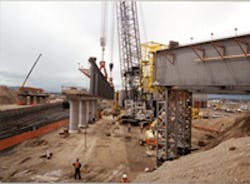Several industry groups are publicly condemning what they claim is the Obama administration’s effort to earmark an ever larger share of highway funds for non-highway projects. They are particularly livid over the administration’s proposal to take $200 million in highway taxes normally distributed to the states and re-direct them into a new Livable Communities program unveiled by the U.S. Dept. of Transportation (DOT) in January.
“It takes a lot for a group like ours to publicly criticize a Presidential administration this way,” Greg Cohen, president & CEO of the American Highway Users Alliance (AHUA), which represents motorists, bus companies, truckers, RV enthusiasts, motorcyclists and other highway-related businesses, told FleetOwner.
“But this ‘livable community’ program is an urban planning project that does not have freight in mind,” he stressed. “It’s about creating more bicycle paths and ‘walkable’ communities – it does not even think for a moment about freight needs.”
By contrast, Cohen pointed out that state highway programs are dangerously underfunded, with pavement conditions rapidly deteriorating due to the brutal winter, and one-quarter of highway bridges across the nation in need of repairs. Yet the DOT Livable Communities program would purposefully redirect highway user fees paid by motorists and truckers to non-highway projects.
“By holding back funding that states use to address immediate and urgent highway needs, the Administration’s proposal shows more interest in dictating spending priorities from Washington than improving our ailing highway system,” he said.
Bob McKenna, president &d CEO of the Motor & Equipment Manufacturers Association (MEMA) also stressed that Congress should keep its funding focus on preserving highway user fees for the maintenance and repair of our roads and bridges alone. “While [the livable communities project] is certainly a laudable program, the redirection of funds specifically raised to support the nation’s infrastructure is misplaced,” he said.
AHUA’s Cohen also sees this earmarking proposal as an indication that the Obama administration is growing increasingly biased in its transportation policies. He pointed to DOT’s earmarks from last year’s stimulus bill, also known as TIGER grants, as an example. “Although more than half of the grants requested by applicants were for highway projects, only 42% of the grants were distributed for highways—in comparison to transit programs, where a mere 16% of applicants represent a third of distributed grants,” he said.
With over $4 billion in the administration’s Fiscal Year 2011 highway budget proposal proposed to go to discretionary DOT earmarks, the shortage of federal aid to states for highway safety and congestion relief funding adds insult to injury, Cohen added.
“If Congress is serious about building a safer and more mobile highway system that can allow the United States to compete in the world economy, then they will reject this dangerous proposal in the President’s FY11 budget proposal,” he said. “At a time when funding our roads has never been more important to economic growth and national competitiveness, actions like these are incredibly harmful to maintaining a safe and mobile highway system.”
About the Author
Sean Kilcarr
Editor in Chief
Sean Kilcarr is a former longtime FleetOwner senior editor who wrote for the publication from 2000 to 2018. He served as editor-in-chief from 2017 to 2018.
